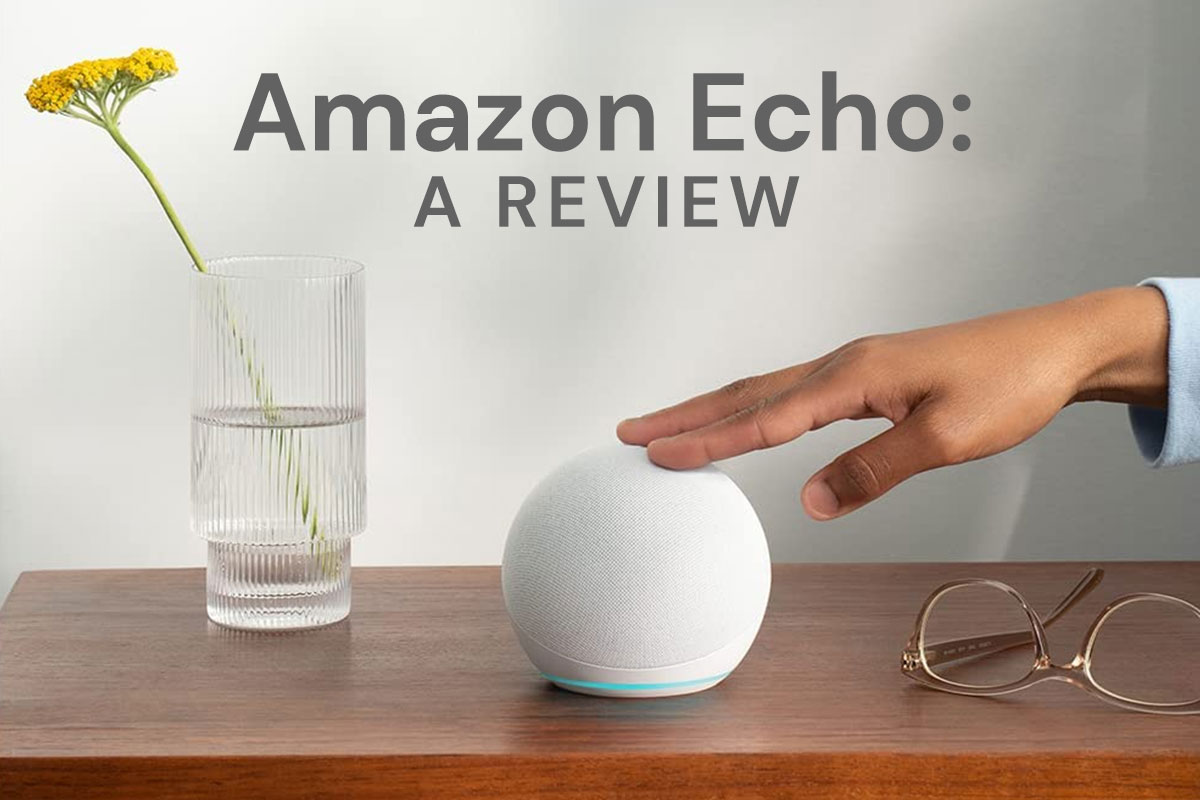In the next few months, we plan to do a series of posts on what’s being called “The Internet of Things,” or the IoT. The Internet of Things is a scenario in which the objects in our environment are embedded with electronics that allow them to be sensed and controlled remotely across the existing network infrastructure—for example, home automation. If you have a Nest thermostat, you have a toehold into the Internet of Things. And we predict the next step in establishing an IoT for yourself is the Amazon Echo, which currently retails for $179.99. At first glance, it looks like a wireless Bluetooth speaker. Big deal, right? In this case, looks are deceiving.
Setting up the Amazon Echo
The Echo is a small, matte black cylinder that measures 9.25 inches high with seven integrated microphones, and it does need to be plugged in; there is no battery option. When you take it out of the box, you simply plug it in, download the Amazon Echo app, and use it to connect the Echo to your WiFi network. You “wake up” the Echo by starting your commands with the word “Alexa,” although you can change it to another word if you prefer—a good idea if you happen to have a daughter named Alexa.
What You Can do with the Echo
It does indeed act as a Bluetooth speaker, but the sound quality will not send audiophiles replacing their hi-fi systems. It does have a 2-inch tweeter, a 2.5-inch woofer, and an elongated reflex port, giving it enough power to fill a small room with distortion-free music, comparable in performance to a Jambox. You can ask the Echo a question, and “Alexa” will respond—Amazon’s answer to Siri and Cortana. The Echo can read you a book from Audible, look up the answer to your question on Wikipedia, act as a timer, perform a math calculation, read the news from NPR, or play any piece of music from your personal Amazon music library. According to Amazon:
“You can now enjoy hands-free voice control for [Spotify, iTunes, and Pandora]. To get started, simply connect your phone or tablet to Echo by saying ‘Alexa, pair my device.’ After you start playing your music, you can easily control it by saying the wake word and: play, pause, stop, next, or previous.”
The response time is fast, and the Echo is one of those rare devices that just works. Its potential is nearly limitless. A few of the things you can do with an Echo:
- Add items to a to do list or a shopping list verbally, and the items will show up on your Echo app
- Ask it to tell you what 34543.12 divided by 321.17 is (or any other similar mathematical calculation)
- Ask it how many days till February 14
- Play custom stations from iHeartRadio and Pandora
- Add your commute location and ask for a traffic update
- Integrate with your Google calendar
- Connect with other WiFi-connected home automation devices, such as Belkin’s products or the Hue line of lightbulbs by Phillips; when you say “Alexa, turn on the bedroom lights,” all the lights in that room are turned on at once
Certainly, you can do these things from your phone right now… but it’s the hands-free, easy-access angle that makes the Echo worthwhile, eliminating the need to swipe and tap through several screens on a phone.
The Echo and Kids
There are some silly features that will appeal to kids. You can play a game of “Simon Says” with it, or ask it to tell you a joke. It performs well when kids talk to it, unlike a lot of voice recognition software out there that freezes up when asked to parse a child’s voice. Or you can speak into the remote control from another room and have your Echo say fun things to your kids and fool them into thinking it’s talking to them. Here’s a list of the known Easter eggs embedded in Alexa’s software.
What’s Next for the Echo
Fortunately, Amazon has released a free set of APIs that enable developers to add Alexa to any device with a speaker, a microphone, and an Internet connection—using only a few lines of code. It’s also released the Alexa Skills Kit, enabling developers to create new voice-driven skills and capabilities for Alexa on the Echo. Amazon seems to be hoping that developers will take up the gauntlet and create more smart home integrations, and we do too.
Want to talk more about the Internet of Things? Or do you have a question about smart homes that’s been bugging you? Leave us a comment or contact us for a consultation.






